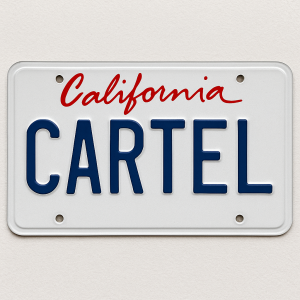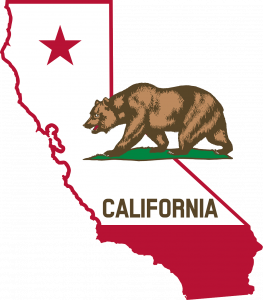Author: Aaron Gott
In my last post, I discussed how California’s newly enacted AB 1340—which allows independent contractor gig drivers to form a “union” and engage in sectoral bargaining against rideshare companies such as Uber and Lyft—likely does not provide the federal antitrust immunity that it purports to provide. This week, I’d like to discuss the other problem with AB 1340: it is likely unconstitutional.
In 2018, the Ninth Circuit decided Chamber of Commerce v. City of Seattle, striking down a Seattle ordinance that authorized rideshare drivers to engage in collective bargaining with Uber and Lyft.
So why did California just enact essentially the same law? AB 1340 revives nearly the same structure—and the same constitutional defect—under a new label, in a different locale.
Now, there is a key factual difference between the Seattle ordinance and AB 1340. Can you spot it?
The difference is that California is a state, and Seattle is a mere political subdivision. And that difference matters, because we have a dual federalist system: states on the one hand, and the federal government on the other. Cities? They are not sovereign and are irrelevant for federalism purposes. (But don’t shed any tears for municipalities: they get an ill-reasoned exemption from the active supervision prong set forth in Town of Hallie v. City of Eau Claire, plus the Local Government Antitrust Act of 1984, which immunizes them from antitrust damages and fees, thus freeing them to pursue all sorts of anticompetitive schemes with reckless abandon.)
Still, this factual difference does not save AB 1340 from the same fate as Seattle’s ordinance.
The problem is that California’s AB 1340 is not a genuine act of state regulation, but merely an attempt to declare private coordination immune from federal law.
Under Supreme Court precedent, naked attempts to immunize anticompetitive conduct are foreclosed not only by the state-action immunity doctrine. They are also subject to federal preemption.
From Seattle to Sacramento
Seattle’s ordinance authorized “qualified representatives” of for-hire drivers—eventually, the Teamsters—to bargain collectively with companies such as Uber and Lyft. Everyone agreed the ordinance facilitated private price-fixing, and the city defended it on state-action grounds. The Ninth Circuit rejected that defense.
The court held that Washington’s general authorization to regulate for-hire transportation did not clearly articulate a policy to displace competition in the ride-referral market, and that a statutory declaration purporting to exempt local regulation from the Sherman Act was not a policy to displace competition—it was an impermissible attempt to exempt municipal conduct from federal law altogether. Finally, the court confirmed that the “municipal exception” to active supervision is narrow: when private actors participate in the restraint, active state supervision is required, and cities are not “the state itself.”
The Ninth Circuit emphasized that “authority to regulate a market is not the same as authority to authorize anticompetitive conduct.” That observation speaks directly to the structure of AB 1340, even if California, unlike Seattle, acts here as the sovereign rather than its subdivision.
What the Ninth Circuit Actually Held
Two features of Chamber v. Seattle are particularly relevant.
First, the Ninth Circuit drew a sharp line between a policy to regulate and a policy to displace competition. The state statute there authorized municipalities to regulate for-hire transportation for safety and reliability reasons, but said nothing about replacing market competition with collective bargaining. The resulting ordinance therefore lacked the “clear articulation” required by Midcal.
Second, the court rejected the notion that the legislature could “immunize” municipalities from the Sherman Act by fiat. Citing Parker v. Brown, it reiterated that “states cannot give immunity to those who violate the Sherman Act by authorizing them to violate it.” A declaration of exemption, even one framed as explicit legislative intent, is not a substitute for a true regulatory program.
And in footnote 9, the court made a related and important point:
“The City’s argument that the presumption against preemption applies here is misplaced. State-action immunity is a defense to preemption.”
That is, the doctrines are not separate. If state-action immunity fails, federal law preempts.
AB 1340 and the Limits of State Sovereignty
California’s position differs from Seattle’s in one respect: a state itself has enacted the challenged framework. That distinction matters under Parker, which recognizes that the Sherman Act does not bar a state acting as sovereign from imposing market restraints “as an act of government.” But AB 1340’s flaw is not that it delegates authority to a city; it’s that it authorizes private competitors to collude and then declares their collusion immune from federal scrutiny.
That structure is inconsistent with Parker and a number of subsequent Supreme Court cases. The statute’s declaration that the “state-action antitrust exemption shall apply” does not transform private collusion into sovereign regulation. It is simply a legislative announcement that California intends to exempt certain conduct from federal law—something it cannot do. The Constitution allows states to regulate, but not to negate federal statutes.
The Federal Boundary
The Ninth Circuit’s footnote in Seattle captured the relationship succinctly: state-action immunity is a defense to preemption. When the defense fails, federal supremacy governs. The result is not a close call. AB 1340 does not replace competition with regulation; it replaces it with private collusion, then declares that collusion lawful. That is precisely the type of state-created conflict the Supreme Court’s preemption jurisprudence forbids.
A facial challenge to AB 1340 before implementation would thus rest on solid ground. The statute’s structure and purpose conflict directly with the Sherman Act and the Supremacy Clause. As Chamber v. Seattle illustrates, courts remain willing to enforce that boundary when governments—state or local—attempt to erase it.
From Seattle to Sacramento
The Seattle ordinance was straightforward. It allowed independent drivers to “collectively bargain” against app-based “driver coordinators” such as Uber and Lyft. The City appointed the Teamsters as the designated representative to negotiate rates and terms. Everyone agreed that this amounted to private price-fixing—a per se violation of the Sherman Act—but the City argued it was immune because Washington law allowed municipalities to regulate for-hire transportation services.
The Ninth Circuit rejected that argument on every front. The court held that:
- Washington’s general authorization to regulate for-hire transportation did not clearly articulate a policy to displace competition in the ride-referral market.
- A statutory declaration purporting to exempt local regulation from federal antitrust law was not a policy to displace competition—it was an invalid attempt to exempt state and local conduct from federal law.
- The “municipal exception” to the active-supervision requirement is narrow: when private actors participate in the restraint, state supervision is required.
As the court put it, state law authority “to regulate a market is not the same as authority to authorize anticompetitive conduct.”
That reasoning applies squarely to AB 1340. California’s statute authorizes the same kind of horizontal coordination and then declares the result immune. It is, in substance, Seattle 2.0—a legislative replay of a theory the Ninth Circuit has already rejected.
Why AB 1340 Raises the Same (and Worse) Problems
Like Seattle’s ordinance, AB 1340 authorizes private competitors—rideshare drivers—to coordinate on pricing and output decisions. And, just as Seattle did, California attempts to pre-emptively declare that conduct exempt from federal scrutiny: “the state-action antitrust exemption shall apply.”
 The Antitrust Attorney Blog
The Antitrust Attorney Blog












